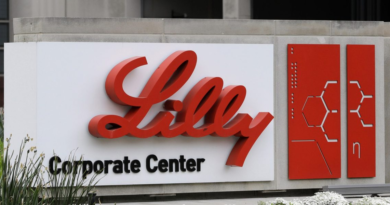Hydrogen is back. At least, CES 2024 suggests it is.
Hydrogen has always been presented by automakers and politicians as an alternate clean-energy option for electric vehicles, but it’s never really caught on. Don’t tell anyone at CES 2024, though, as this year’s show floor was littered with vehicles of all sizes that are hydrogen-powered.
There has been so much focus on battery-powered electric vehicles over the last few years that it seemed like hydrogen might be left in the proverbial dust. So is hydrogen power about to experience a comeback? Or is it yet another example of companies making promises at CES that they won’t be able to keep?
Let’s start by looking at what was at the show this year.
Perhaps no company is more married to hydrogen power than Nikola. The trucking startup was founded around the idea of a big rig with a fuel cell, and its former CEO Trevor Milton went to great lengths — to the point of criminal fraud charges — to promote it.
Nikola has spent the last few years trying to build itself anew with Milton in the rear view. In order to do that, the startup put off the hydrogen truck in favor of an all-electric version, which it started shipping in 2021.
At CES, Nikola finally showed off one of its first U.S.-built hydrogen trucks that it’s starting to ship to customers. If there’s a future where a reimagined Nikola helped usher in the proliferation of hydrogen-powered trucks, this is where that begins.
Another startup at the Vegas trade show, Croft Motors, is developing “rugged” hydrogen-powered vehicles. The firm is starting with a three-row, prototype SUV with an “anticipated 1,000 miles of driving range,” co-founder Isaac Holeman told TechCrunch.
Holeman believes the recent slowdown in battery-electric vehicle adoption has made it the “right time to reignite that conversation” about hydrogen’s potential. Croft is also developing a refrigerator-sized device that splits water into hydrogen and oxygen (a process called electrolysis). Holeman argued that “distributed fueling products” such as Croft’s will enable “rapid” hydrogen vehicle adoption.
Far on the other end of the spectrum, well-established automaker Hyundai also appears to be embracing hydrogen in a new way.
The Korean automaker has spent decades working on hydrogen-powered vehicles, and says the tech will play a “prominent role” in the Hyundai Group’s attempt to become a carbon-neutral company by 2050.
What that looks like involves not just an attempt at popularizing cars and SUVs that run on hydrogen, but doing the same for all of the heavy-duty vehicles it makes. Hyundai says these construction vehicles are too big and require too much energy to run on battery power. Instead, the firm argues hydrogen makes more sense as a clean energy source. It’s worth noting that HD Hyundai, a construction equipment, refinery and shipping conglomerate that spun out of the parent company in 2002, had one of the larger displays at CES 2024.
“Our goal is build up [an] entire hydrogen energy ecosystem across the whole of the earth, from ocean to land,” Dongwook Lee, president of HD Hyundai, said during a press conference. He said Hyundai wants to incorporate hydrogen power into everything it makes, from shipbuilding to construction machinery, and that it wants to create production and storage solutions, too.
“It’s already part of our short-term roadmap to commercialize alternative clean-hydrogen production methods,” said Chang Hwan Kim, who oversees fuel cell and battery development at Hyundai. The executive said Hyundai is working to turn “sewage sludge and other forms of organic waste” into clean hydrogen.
Suppliers are invested, too. Bosch, which already makes hydrogen fuel cells (like the one Nikola uses in its truck), announced it will make an engine that can combust hydrogen, skipping the process where that energy gets converted to electricity and stored in a battery. Truck-builder PACCAR was also at the show with two of its newest hydrogen-powered trucks, one under the Kenworth brand, and one Peterbilt. The company said this week it has received “more than 150 paid deposits” for hydrogen trucks across those two brands, and that it expects to ship them next year.

Image credits: Natalie Christman for TechCrunch
Channeling Vegas more than the others, South Korean energy and manufacturing giant SK Group attempted to hype its hydrogen and AI business via a theme park of sorts at CES. The rides included a small train “capable of being powered by hydrogen energy” and an “AI fortune teller.”
Why now?
There’s political will, and money. Federal investments in green hydrogen and refueling infrastructure — two big obstacles to widespread adoption — are giving HFCVs a boost. That’s crucial, since nearly all hydrogen fuel is produced with fossil fuels today, and there’s currently little infrastructure to keep HFCVs running, whether they’re passenger cars or heavy-duty trucks.
For one, the 2022 Bipartisan Infrastructure Law put $9.5 billion toward “clean hydrogen initiatives” to create hydrogen production “hubs” across the U.S. Some of these hubs will create green hydrogen via renewable energy and electrolysis.
Hydrogen transport is also getting a lift from the same legislation that incentivizes battery-electric vehicle sales. Alongside the EV tax credit, the Inflation Reduction Act (IRA) created a hydrogen production credit, which offers producers as much as $3 per kilogram to offset the higher cost associated with clean hydrogen production.
As part of the IRA, the Federal Highway Administration announced during (though not at) CES hundreds of millions of dollars for new charging and fueling infrastructure — with a huge chunk of it going to hydrogen.
There’s also corporate interest from the fossil fuel industry, which put tens of millions of dollars toward hydrogen lobbying efforts in the first three quarters of 2023. For example, Shell, BP, Chevron and ExxonMobil are all members of a lobbying group called the Clean Hydrogen Future Coalition. Despite its tidy name, the group argues that fossil fuels such as natural gas should play a role in the “clean hydrogen ecosystem” when paired with carbon-capture tech. The trouble is, methane chronically leaks along the supply chain, and though the gas doesn’t stick around long in the atmosphere, it’s “80 times more potent at warming than carbon dioxide,” per the United Nations.
While there’s corporate and political interest, hydrogen-powered vehicles remain relatively scarce. The reasons are complex, but the lack of infrastructure is a critical one.
For one, the U.S. energy grid already exists. Though it’s ancient, it’s the backbone supporting tens of thousands of EV stations across the country. Hydrogen refueling stations, on the other hand, are a lot harder to come by.
Another reason is waste; hydrogen fuel cell vehicles are generally less efficient than battery-electric vehicles, according to Gregory Keoleian, who co-directs Sustainable Systems and MI Hydrogen at the University of Michigan. Around 30% of the energy required for electrolysis is lost, and further losses come from transporting, compressing and converting hydrogen back into electricity via a fuel cell. “So, if you have limited renewable electricity, putting it into battery electric vehicles is going to be much more effective to decarbonize,” Keoleian said in a call with TechCrunch.
And yet, as Hyundai, Nikola and other hydrogen-focused firms argue, the advantages of battery-electric vehicles aren’t as pronounced in areas such as trucking, medium-duty vehicles and air travel. That’s because EV batteries are many times heavier than fuel cells, and they take hours to fully recharge. Refueling a hydrogen-powered vehicle, on the other hand, is about as time consuming as filling up a conventional gas tank. The catch is, companies need to actually make the fuel affordable and accessible, without prolonging our dependence on fossil fuels.
Production and distribution remains one of the biggest bottlenecks, according to Niklas Wahlberg, head of Partnerships and System Solutions at Volvo. But he says interest in the energy source is growing. “Hydrogen is becoming more and more of a tangible alternative,” Wahlberg says.
And while Nikola became something of a bad poster child for hydrogen power over the last few years, Wahlberg says he doesn’t think that really set the industry back. “Of course there will be companies who have difficulties,” he says. “Things are progressing very well. And this is an area that we and others are very, very keen on developing.”



